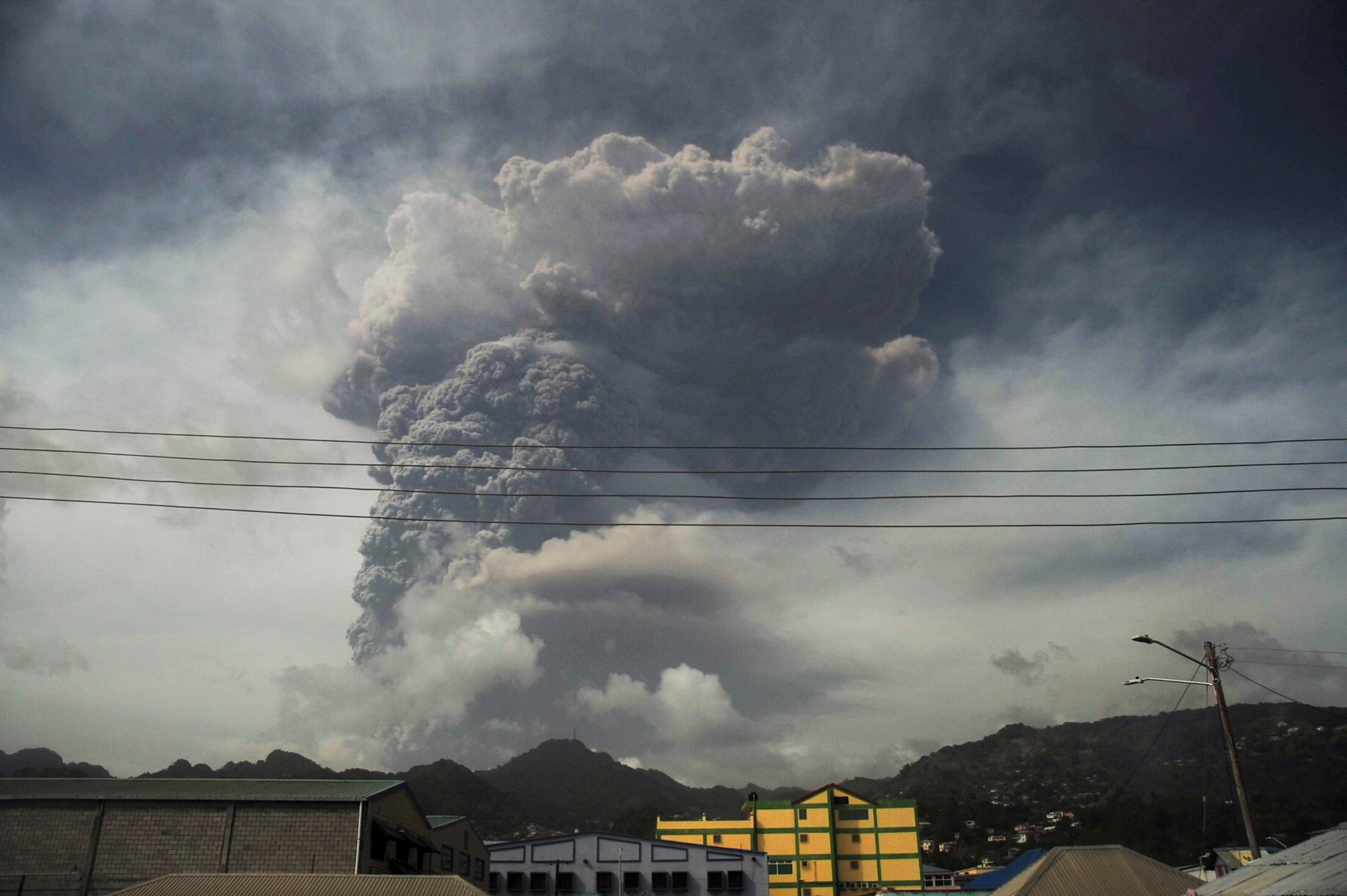St Vincent volcano: thousands evacuated before powerful eruption
The La Soufriere volcano shot ash thousands of feet into the air

Your support helps us to tell the story
From reproductive rights to climate change to Big Tech, The Independent is on the ground when the story is developing. Whether it's investigating the financials of Elon Musk's pro-Trump PAC or producing our latest documentary, 'The A Word', which shines a light on the American women fighting for reproductive rights, we know how important it is to parse out the facts from the messaging.
At such a critical moment in US history, we need reporters on the ground. Your donation allows us to keep sending journalists to speak to both sides of the story.
The Independent is trusted by Americans across the entire political spectrum. And unlike many other quality news outlets, we choose not to lock Americans out of our reporting and analysis with paywalls. We believe quality journalism should be available to everyone, paid for by those who can afford it.
Your support makes all the difference.A volcano has erupted on the Caribbean island of St Vincent, shooting ash thousands of feet into the air and grounding flights.
The La Soufriere volcano on the island’s northernmost tip blew on Friday morning, a day after locals were ordered to leave the area by the government.
Around 16,000 people were forced to flee after scientists warned of magma movements close to the earth’s surface.
The eruption shot ash more than 33,000 feet into the sky as lightning crackled through the cloud of smoke. Further eruptions could continue for days, or even weeks, experts have warned.
Richard Robertson, a geologist with the University of the West Indies, said that “the first bang is not necessarily the biggest bang this volcano will give”.
La Soufriere had an effusive eruption in December, after which experts discovered the formation of a new volcanic dome and changes to its crater lake. It has previously erupted in 1979 and in 1902, when some 1,600 people were killed.
No deaths or injuries have been reported as a result of Friday’s eruption.
Speaking to NBC Radio, a local news station, prime minister Ralph Gonsalves said: “Agriculture will be badly affected, and we may have some loss of animals, and we will have to do repairs to houses, but if we have life, and we have strength, we will build it back better, stronger, together.”
He added that depending on the damage caused, it could take up to four months for life to return to normal on St Vincent, part of an island chain that includes the Grenadines and which is home to more than 100,000 people.
Currently, 2,000 people are staying in 62 government shelters while four empty cruise ships stand by ready to evacuate them from the island. People staying in the shelters have been tested for Covid-19, with those testing positive being taken to an isolation centre.
Emergency supplies, including, cots, tents and respirator masks, have reached other evacuees after nations from Antigua to Guyana offered help.
They also agreed to temporarily open their borders to evacuees, but limited visibility from falling ash has complicated leaving the island for some.
Surrounding islands, including Barbados, St Lucia and Grenada, could see ashfall too, although the majority is expected to blow into the Atlantic Ocean.
St Vincent is now braced for possible further explosions as the 4,000 foot volcano continues to rumble.
Join our commenting forum
Join thought-provoking conversations, follow other Independent readers and see their replies
Comments